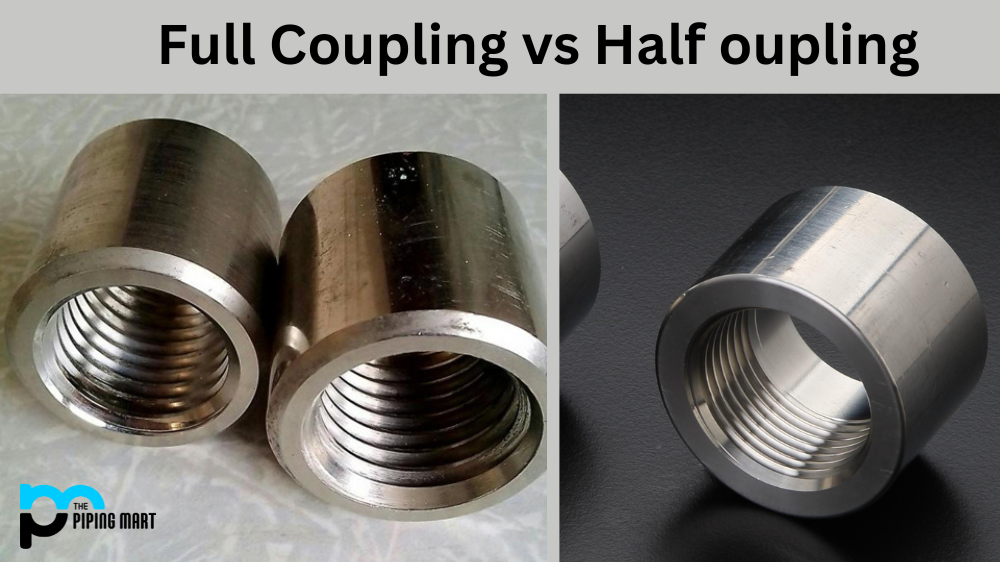Regarding plumbing, full coupling and half coupling are two essential components of a robust system. But what exactly is the difference between the two? Let’s look at each one and how they can help keep your plumbing system running smoothly.
Full Coupling
Full coupling is designed to connect two pieces of pipe together using a socket-welded or threaded connection. This type of connection requires that both pipes be cut precisely so that when joined together, both ends form a reliable seal without needing additional materials such as gaskets or sealants. Full coupling is typically used in applications where there is enough room for the entire length of the pipe to fit within its fittings, ensuring that there are no gaps or leaks in the connection.
Half Coupling
Half couplings are used when there isn’t enough room for a full coupling to fit into its fittings. This type of coupling only connects one end of the pipe, leaving an open end on the other side. It’s important to note that half couplings require additional jointing materials such as gaskets or sealants to ensure their connections remain watertight. Half couplings are typically used when connecting pipes in tight spaces where full couplings cannot be used.
Difference Between Full Coupling and Half Coupling
What is a coupling?
A coupling is a device used to connect two shafts at their ends to transmit torque. Couplings can be rigid or flexible, and are frequently used in power transmission applications such as motors and generators.
What is a full coupling?
A full coupling is a type of rigid coupling that consists of two hubs that are connected together by a central sleeve. Full couplings are typically used in applications where high levels of torque need to be transmitted, such as in motors and generators.
What is a half coupling?
A half coupling is a type of rigid coupling that consists of one hub that is connected to a central sleeve. Half couplings are typically used in applications where lower levels of torque need to be transmitted, such as in pumps and compressors.
Advantages of full coupling over half coupling
One advantage of full coupling over half coupling is that full couplings can transmit higher levels of torque. This is because full couplings have two hubs that are connected together, while half couplings only have one hub. Additionally, full couplings tend to be more durable than half couplings as they have less moving parts.
Advantages of half coupling over full coupling
One advantage of half coupling over full coupling is that half couplings are easier to install and remove than full couplings. This is because half couplings only have one hub, while full couplings have two hubs that must be connected. Additionally, half couplings tend to be less expensive than full couplings as they have fewer parts.
Conclusion:
When it comes to plumbing, full coupling and half coupling are essential components of any robust system. Knowing the difference between them can help you ensure your plumbing needs are met efficiently and safely. Full couplings provide a secure connection between two ends of a pipe. In contrast, half couplings allow for connections in tight spaces where full couplings cannot be used but need additional jointing materials for sealing purposes. Both types of couplers will ensure your plumbing runs smoothly and reliably for years to come!
Meet Heer, a dynamic and driven writer learning tricks of her trade in the metal industry. With a background in Digital Marketing, Heer brings a unique perspective to her writing, sharing valuable insights. Apart from blogging she like reading and hiking.




